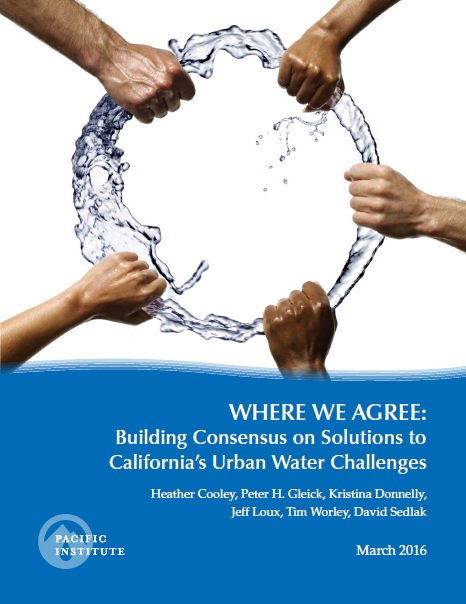Where We Agree: Building Consensus on Solutions to California’s Urban Water Challenges

Where We Agree: Building Consensus on Solutions to California’s Urban Water Challenges
California has a long list of unresolved and difficult water challenges, made more urgent by periods of severe drought that are exacerbated by climate change. As the state’s population continues to grow and climate changes become increasingly apparent, the pressures to identify and implement solutions to these critical challenges are intensifying. With competing needs and uses for water across the state, management of this valuable resource is a source of conflict among sectors. Recognizing the urgent need for serious changes in the way water is managed and used in California, the Pacific Institute, in partnership with the California-Nevada Section of the American Water Works Association, the UC Berkeley Water Center, and the University of California Davis Extension’s Collaboration Center, coordinated a series of in-depth meetings with a broad array of stakeholders. The result is a set of practical recommendations for policymakers, municipal water managers, businesses, and community groups. This unique effort provided participants opportunities to move beyond the traditional rancor and conflict by coming together to identify pragmatic and achievable solutions to urban water challenges. Together, they generated a set of practical recommendations for policymakers, municipal water managers, businesses, and community groups. The group was comprised of representatives from water utilities, trade associations, nonprofit organizations, academia, foundations, and the business sector.
Key findings include: The meetings identified key ways to improve urban water management in California. Prior to the workshop, the organizers developed 41 test statements in five key areas: Some key areas of agreement identified by the group include:Overview
Key Findings

